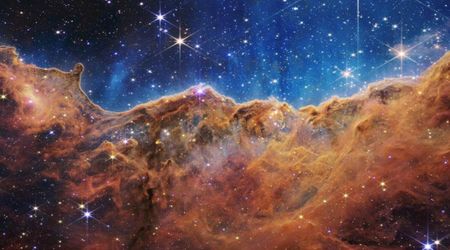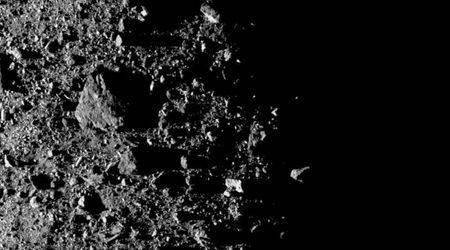NASA's Perseverance rover makes historic first observation of Martian auroras from the surface

In mid-March 2024, as the sun's activity reached a high point, it unleashed a powerful solar flare and coronal mass ejection (CME). This event — a huge burst of solar material and magnetic energy loaded with energetic particles — triggered spectacular auroras throughout the solar system, as reported by Phys.org. Notably, NASA's Perseverance rover achieved a groundbreaking first by observing these auroras from the surface of Mars. According to Elise Knutsen, a postdoctoral researcher at the University of Oslo in Norway and lead author of the Science Advances study, "This exciting discovery opens up new possibilities for auroral research and confirms that auroras could be visible to future astronauts on Mars' surface."

The Aurora Borealis is a spectacle of light created when solar particles, guided by our planet's global magnetic field, collide with atmospheric gases near the poles. This interaction often results in a characteristic green glow, produced by oxygen atoms emitting light at a specific wavelength. For a long time, scientists have speculated about the possibility of similar green auroras on Mars. However, they anticipated that these Martian auroras would be significantly fainter and much harder to detect compared to Earth's, primarily due to the fundamental difference in planetary magnetic fields. Unlike Earth, Mars lacks a global magnetic field, leading to the formation of distinct types of auroras.

One such 'distinct aurora, known as solar energetic particle (SEP) auroras, was discovered by NASA's MAVEN (Mars Atmosphere and Volatile EvolutioN) mission in 2014. These auroras occur when exceptionally energetic particles from the sun directly impact Mars' atmosphere, triggering a reaction that causes its entire upper atmosphere to glow. Notably, MAVEN's previous observations of SEP auroras were conducted in ultraviolet (UV) light from its orbital vantage point.
The observation of this phenomenon in visible light, from the surface of Mars, represented a scientific milestone. Since SEP events are typically more frequent during periods of heightened solar activity known as the 'solar maximum,' Dr. Knutsen and her research team strategically aimed their efforts at capturing visible light images and spectra of these SEP auroras from the surface of Mars during the current solar cycle's peak. Their goal was to achieve a ground-level visible light detection of a type of aurora previously only observed in ultraviolet radiation from orbit. On this, Knutsen said, "The trick was to pick a good CME, one that would accelerate and inject many charged particles into Mars' atmosphere," as mentioned by the outlet.
Space physicist, Christina Lee, at the University of California, Berkeley, who is part of the MAVEN mission and serves as its space weather lead, received an alert from the M2M office regarding the coronal mass ejection (CME) that occurred on March 15. After analysing the information, Lee concluded that a significant solar storm was directed towards "the red planet" and was expected to arrive within a few days. Lee shared, "This allows the science teams of Perseverance and MAVEN to anticipate impacts of interplanetary CMEs and the associated SEPs." On the other hand, Knutsen said, "When we saw the strength of this one... We estimated it could trigger aurora bright enough for our instruments to detect." Mission data suggests that they had little time to photograph this magnificent discovery, but they managed to pull through and obtain never-before-seen visuals.









